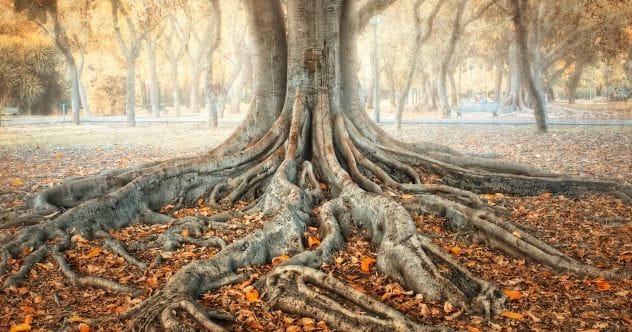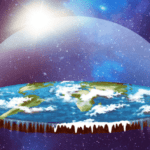Think the world above is all there is? Think again! Beneath our very feet lies a realm of mystery, marvel, and sometimes, macabre history. From massive scientific projects to life forms that defy extreme conditions, the subterranean world is buzzing with activity. Get ready to dig into ten fascinating things happening right now, deep underground.
10The Search for Dark Matter
Deep beneath the Black Hills of South Dakota, nearly a mile underground, scientists are on a cosmic treasure hunt. In an old gold mine, the Sanford Underground Research Facility (SURF) hosts 250 researchers from 37 institutions. Their mission? To find dark matter, one of the universe’s biggest mysteries.
The project, known as LUX-ZEPLIN (a cool acronym for Large Underground Xenon and ZonEd Proportional scintillation in Liquid Noble gases), aims to detectelusive particles called WIMPs (Weakly Interacting Massive Particles). We know about regular matter – rocks, water, us. But all that doesn’t add up to the universe’s total mass. Dark matter is the missing stuff.
Scientists hope a WIMP will bump into a xenon nucleus inside a giant tank filled with liquid xenon. This collision would create a tiny flash of light, allowing us to ‘see’ dark matter for the first time. Being so deep underground shields the experiment from cosmic rays and other interference, making it the perfect quiet spot for this five-year quest.
920,000 Corpses Under a Public Park
New York City’s Washington Square Park is a lively spot today, but it holds a somber secret. Back in 1797, the city bought farmland to use as a potter’s field – a burial ground for the poor, unknown, criminals, and victims of disease. This was just north of the city’s edge at the time.
Soon after, Yellow Fever swept through New York repeatedly, and the field quickly filled up. By the early 1820s, it was at capacity. Then, in 1827, Mayor Philip Hone decided to turn the burial ground into a public square as part of a real estate plan. Shockingly, the bodies weren’t moved.
The potter’s field was renamed Washington Military Parade Ground, later shortened to Washington Square Park. It’s estimated that over 20,000 people are still buried beneath the park’s grass and pathways. The real estate scheme worked, though; property values around the new park shot up, and New York University became a major landowner in the area.
8Extreme Resilience
Imagine life thriving in total darkness and freezing cold, 650 feet beneath an Antarctic ice shelf. That’s exactly what scientists found under the Ekström Ice Shelf! They discovered 77 different types of creatures, including worms and moss animals called bryozoans, living in water at -2°C (28°F).
This discovery is changing how researchers view life in such extreme underwater places. David Barnes from the British Antarctic Survey said this find could offer clues about how polar sea life survived past ice ages. To reach this hidden world, scientists drilled through the ice with a specialized hot water drill and sent cameras down.
Carbon dating showed that life has existed in this spot for nearly 6,000 years. While other tiny microbes have been found living off bedrock under Antarctica, finding a bustling community of larger organisms in such a harsh, dark environment was a big surprise. It expands our understanding of where life can endure.
7A City Under a City
Montreal, Canada, is famous for its chilly winters. With average winter temperatures around -6.2°C (20.8°F), and the wind from the St. Lawrence River making it feel even colder, Montrealers needed a clever way to cope. Their solution? Go underground!
Known as le Réso (The Network), Montreal has an enormous system of tunnels, malls, and transportation hubs beneath the city streets. This network stretches for over 20 miles (32 kilometers), connecting subway stations, office buildings, homes, shops, and restaurants. Many commuters don’t even need a winter coat because their entire journey from home to work can happen indoors.
Students and tourists can also navigate much of the city without braving the cold, accessing universities, museums, and theaters through this subterranean world. Montreal’s underground is an attraction itself, featuring things like a skating rink and public art exhibitions, making life below ground vibrant and convenient.
6Nothing, Unfortunately
No list of underground activities would be complete without mentioning Oak Island, a place that’s inspired what some call television’s most drawn-out treasure hunt: The Curse of Oak Island. This small island off Nova Scotia’s coast has been the site of treasure hunting for over 200 years.
Legends link the supposed treasure to pirates like Captain Kidd or even secret societies like the Freemasons. In 2006, brothers Rick and Marty Lagina joined the long line of searchers. Their efforts have been televised for many seasons, showing them digging hole after hole, finding trinkets, and fueling speculation that ‘something big’ is just around the corner.
Despite countless episodes and endless digging, the grand treasure remains elusive. Critics often compare the show to watching someone endlessly search for something that might not even be there. Yet, the mystery (and the show) continues to captivate many.
5Nothing, Fortunately
Beneath a nondescript parking lot in Berlin, near the Holocaust Memorial, lies a site of immense historical significance: the Führerbunker, where Adolf Hitler spent his final days. For decades, there was no marker, but now a simple plaque informs visitors of what’s buried below.
Once the garden of the Reich Chancellery, Hitler retreated to this bunker in January 1945 as Allied bombing intensified. Here, he lived out his last 3½ months, reportedly descending into paranoia as Berlin’s defenses crumbled. It was in this bunker he married Eva Braun, only for both to commit suicide the following day.
Much of the bunker was destroyed during Berlin’s reconstruction, but some sections still exist underground. These have been sealed off to prevent them from becoming shrines or targets for vandalism, ensuring this dark chapter of history remains buried, both literally and figuratively.
4Drug Smuggling
While border walls are built above ground, Mexican cartels have long been going underground to smuggle drugs into the United States. San Diego, with its industrial outskirts bordering Mexico, is a common target for these sophisticated operations. Large warehouses provide cover for tunnel entrances and exits.
In March 2020, authorities discovered the largest tunnel to date in Otay Mesa, a San Diego suburb. Stretching nearly a mile long and 30 feet deep, it was described as incredibly advanced. It featured a rail and cart system, forced air ventilation, high-voltage electrical systems, an elevator at its entrance, and a drainage system.
Dubbed “Baja Metro” by agents, this tunnel led to the seizure of over two tons of drugs, including 1,300 pounds of cocaine, valued at around $30 million. San Diego even has a dedicated Tunnel Task Force to combat this underground highway of illicit activity.
3The Doorway to Hell
In Turkmenistan’s remote Karakum Desert, there’s a bizarre and fiery tourist attraction known as the Darvaza Gas Crater, or more dramatically, the “Doorway to Hell.” This flaming pit is a stark reminder of a geological miscalculation.
In 1971, Soviet geologists, believing they’d found a substantial oil field, began drilling. Instead, they hit a massive underground pocket of natural gas. The ground beneath their rig collapsed, swallowing the equipment and creating several craters, the largest being 230 feet across and 65 feet deep.
As dangerous methane gas started killing local wildlife by depleting oxygen, the scientists made another questionable decision: they set the crater on fire. They hoped the gas would burn off in a few weeks. That was over 50 years ago. The crater has been burning continuously ever since, a man-made inferno in the middle of the desert.
2Trees Talking
Did you know trees can talk to each other? Recent studies show that trees are far more social and aware than we once thought. Underground, their roots connect through vast networks of fungi, bacteria, and other plant matter, forming what’s called the “Wood Wide Web.” This network might be 500 million years old!
Through this subterranean web, trees share information about environmental threats like droughts or diseases. They can even send nutrients or water to neighbors in need. It’s a cooperative system that helps the whole forest thrive. In 2019, scientists mapped these underground networks globally, covering 1.2 million forest plots and nearly 30,000 species.
While trees compete for sunlight above ground, they collaborate below. They send chemical, hormonal, and slow-pulsing electrical signals to warn each other of dangers or changes in soil conditions. Much of this communication relies on symbiotic relationships with fungi. This incredible system also plays a key role in storing carbon, but it’s vulnerable to rising global temperatures.
1The Largest Living Thing on Earth
When you think of the largest living thing, a blue whale or a giant sequoia tree might come to mind. But the true champion is hidden largely underground. Discovered in 1998 in Oregon’s Malheur National Forest, it’s a single fungal organism covering an astounding 3.5 square miles (9 square kilometers)!
This gigantic fungus, named Armillaria ostoyae, isn’t a giant mushroom you can see. Instead, it’s a vast network of fungal threads called hyphae that spread beneath the soil. It’s a parasitic fungus, meaning it grows by infiltrating the bark and root systems of trees, spreading across the forest floor to find new hosts.
While parts of it do occasionally pop up as mushrooms to reproduce, the bulk of this massive organism remains unseen. It’s so large and mostly hidden that its status as Earth’s largest living thing often surprises people. So, the next time you walk in a forest, remember there could be a colossal, ancient fungus thriving right under your feet.
From the deepest scientific labs to sprawling natural networks, the world beneath our feet is as active and intriguing as the one we see every day. These ten examples are just a glimpse into the hidden landscapes and surprising stories unfolding underground, proving there’s always more to discover if we’re willing to dig a little deeper.
Which of these subterranean stories amazed you the most? Do you know of other incredible underground happenings? Share your thoughts in the comments below!










